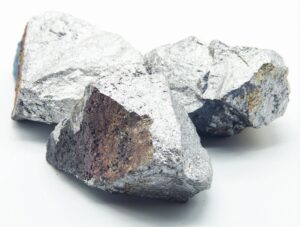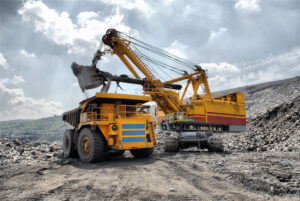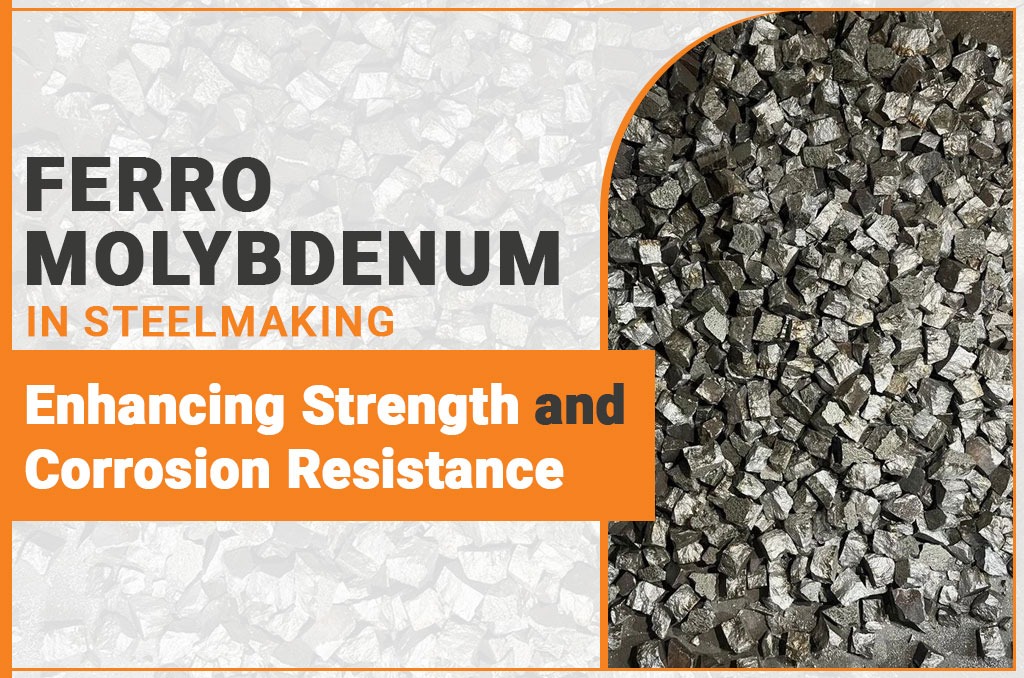In the rapidly advancing industrial world, steel continues to be the backbone of global development. As industries demand stronger, more durable, and highly corrosion-resistant steel, alloying elements like Ferro Molybdenum (FeMo) have become crucial in meeting these challenges. Whether it’s for bridges, power plants, automotive engines, or aerospace components, the role of Ferro Molybdenum in steelmaking cannot be overstated.
This guide explores the composition, production, benefits, applications, and growing market importance of Ferro Molybdenum in modern steel manufacturing.
🔍 What is Ferro Molybdenum?

Ferro Molybdenum
Ferro Molybdenum is an iron-molybdenum alloy containing 60% to 75% molybdenum, with the rest comprising iron and trace elements. It is produced through a process known as thermit reduction, where molybdenum oxide is reduced in the presence of iron. The resulting alloy is a cost-effective and efficient way to introduce molybdenum into steel.
📌 Key Properties of Ferro Molybdenum:
- High melting point (~2623°C for molybdenum)
- High tensile strength and durability
- Excellent corrosion and wear resistance
- Stable at high temperatures
- Enhances hardenability and machinability of steel
⚙️ How Ferro Molybdenum Benefits Steelmaking
The performance of steel can be significantly enhanced with small additions of Ferro Molybdenum. Here’s how it works:
1. Strength Enhancement
Molybdenum increases the yield strength and creep resistance of steel. This allows for the use of thinner, lighter steel without compromising on structural integrity.
2. Corrosion Resistance
When added to stainless and corrosion-resistant steels, molybdenum enhances resistance to pitting, crevice corrosion, and stress corrosion cracking, especially in acidic or chloride-rich environments.
3. Heat Resistance
Molybdenum-rich steels can maintain their strength and stability even at elevated temperatures, making them ideal for turbines, power plants, and thermal reactors.
4. Improved Weldability
Molybdenum helps in reducing the grain coarsening during welding, which improves toughness in the heat-affected zone (HAZ) of welded joints.
5. Enhanced Wear Resistance
Steels alloyed with Ferro Molybdenum exhibit better resistance to abrasion, erosion, and fatigue, essential for tools, dies, and industrial machinery.
🧪 Applications of Ferro Molybdenum in Steel Grades
| Steel Grade | Typical Molybdenum Content | Applications |
| Stainless Steel (316, 317) | 2–3% | Marine, chemical tanks, architecture |
| High-Speed Steel | 5–10% | Cutting tools, saw blades, drills |
| Low Alloy Steel | 0.15–0.3% | Construction, oil rigs, structural beams |
| Tool Steel | 1–5% | Dies, punches, molds, and forming tools |
| Superalloys | 5–30% | Jet engines, gas turbines, space components |
🏭 Major Industries Using Ferro Molybdenum

Major Industries Using Ferro Molybdenum
🚗 Automotive
- Transmission systems
- Suspension parts
- Engine blocks
- Exhaust systems
🏢 Construction
- Rebar and structural steel
- Bridges and tunnels
- High-rise buildings
🛢️ Oil and Gas
- Drill pipes
- Offshore platforms
- Refinery equipment
🛠️ Tool Manufacturing
- High-speed cutting tools
- Press tools
- Industrial dies
✈️ Aerospace & Defense
- Jet engines
- Military-grade components
- Heat shields
🌱 Environmental Impact and Sustainability
♻️ Recyclability
Steel with molybdenum content is fully recyclable, contributing to a circular economy and reducing mining impact.
🔧 Long Service Life
Due to its corrosion resistance and strength, molybdenum-alloyed steels last longer, decreasing the frequency of replacement and repair.
🛡️ Energy Efficiency
Thinner, stronger steel components reduce the overall weight of vehicles and machinery, improving fuel efficiency and energy savings.
📊 Ferro Molybdenum Market Trends
The global Ferro Molybdenum market is forecast to grow steadily due to:
- Increased urbanization and infrastructure development
- Rising demand for high-strength low-alloy (HSLA) steels
- Growth in electric vehicles (EVs) and lightweight automotive materials
- Emphasis on energy-efficient construction materials
🌏 Major Producing Countries:
- China (largest producer and consumer)
- Chile (significant molybdenum mining)
- USA
- Russia
- India (growing demand and production capacity)
🛒 Purchasing Considerations for Ferro Molybdenum
When sourcing Ferro Molybdenum, consider the following:
- Purity and Mo Content
- Form (lumps, fines, or briquettes)
- Packaging standards
- ISO or ASTM certifications
- Supplier reliability and logistics
📝 Conclusion
Ferro Molybdenum is an essential alloying element that significantly enhances the mechanical and chemical properties of steel. From corrosion resistance to high-temperature strength, its benefits span across virtually every industry that relies on advanced materials. As industries continue to innovate and demand superior materials, Ferro Molybdenum’s role in sustainable, high-performance steelmaking will only grow.
Whether you’re a manufacturer, engineer, or steel supplier, understanding the value of Ferro Molybdenum ensures you’re equipped to produce and use materials built for the future.
❓ FAQs
Q1. What is the typical molybdenum content in Ferro Molybdenum?
Usually between 60% to 75%, depending on the grade and application.
Q2. Is Ferro Molybdenum suitable for stainless steel?
Yes. It’s especially useful in marine-grade and acid-resistant stainless steels.
Q3. How is Ferro Molybdenum different from pure Molybdenum?
Ferro Molybdenum is an alloy with iron, making it easier and more cost-effective to add molybdenum to steel.
Q4. Can it improve steel weldability?
Yes, it improves weld strength and minimizes cracking during high-temperature processing.
Q5. What is the price trend of Ferro Molybdenum?
Prices fluctuate based on molybdenum ore supply, industrial demand, and geopolitical factors.
